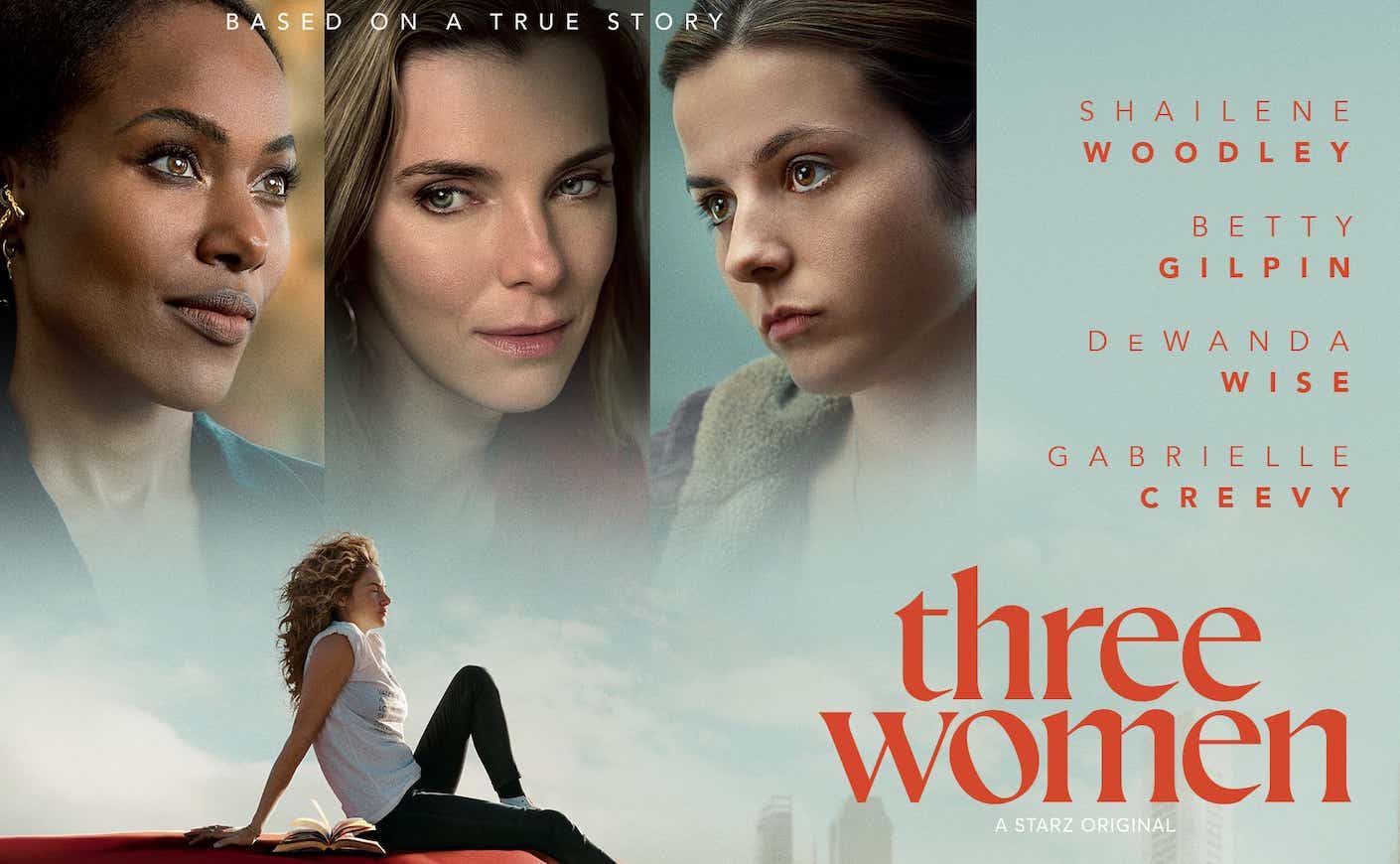By now, you know I can’t resist a story about brave women, and I’m especially intrigued when said story is crafted by a fellow journalist with an insatiable curiosity. (I’m very familiar with that feeling!) So, it was inevitable I’d be drawn to Three Women by Lisa Taddeo.
Her 2019 book became a bestseller and inspired a series starring powerhouses Betty Gilpin, Shailene Woodley, Gabrielle Creevy, and DeWanda Wise that’s currently airing on Starz. To write it, Lisa spent eight years interviewing women across the country, delving deep into their intimate lives and experiences. Her dedication to understanding their stories led her to forge powerful connections, even moving to a small town to truly immerse herself in one woman’s world.
I recently chatted with Lisa to explore the journey from page to screen, the challenges she faced in bringing these profound narratives to life, and how the show captures the raw and honest essence of female desire and connection.
Katie Couric: Lisa, before we talk about the show, tell us how you found the three women the book follows and what prompted you to tell their stories.
Lisa Taddeo: I interviewed many different women, all across the country, for eight years. I put up posters in every town I went to, inviting people to call and tell me about their sex lives. An unconventional therapist in Indiana introduced me to some of his female patients. That’s where I met “Lina,” a homemaker in a dead-end marriage who yearned for true love. I moved to Lina’s town for a year just to get to know her and observe her life. The three women who ended up in the book were the most open and honest about their inner lives and seemed the most connected to their own desires. Whenever I interview people, I try to be as open with them as they are with me; I find that connecting with people on a human level allows them to be more honest and forthcoming with me. I’m using similar methods to meet subjects for the new nonfiction book I’m working on, centered around loss, being trapped in the prison of the mind, and grief in all its forms, including the grief of cognizance.
Getting this series made wasn’t a walk in the park. Tell us about some of the crazy things that happened along the way as an executive producer.
After fighting for the show in a bidding war and producing the full 10 episodes, Showtime shelved the show for a tax break, and it almost didn’t air. On the same day, I found out the show was canceled (which happened to be my birthday!), and I got into a fender bender. Almost immediately, Starz snapped up the show, for which I am deeply grateful. I genuinely feel like the show found the home it deserved. But it was difficult to celebrate because right around the same time, I had a late-term miscarriage. That quite honestly broke me, and it’s something that I still deal with every day. It’s become quite an integral part of my next book — the grief of being alive while losing those around you.
You are a beautiful writer. What was it like adapting these women into characters on screen?
I was primarily concerned with how the subjects would feel seeing themselves on screen, especially Maggie, whose real name is used. She was also a consultant on the show, which helped to make her character and storyline all the more authentic. The character of Sloane, on the other hand, is actually combined with another woman who was interviewed for the book. I spent a lot of time working in the writer’s room on this with Chisa Hutchinson and Tori Sampson, creating this new version of Sloane and deciding what details and themes were the most crucial to represent. We also added Shailene’s character, Gia (a version of myself, the writer), as the real-life connective tissue between all the stories. There is no Three Women without showing how all women come together to be truthful with each other; we really wanted to show those moments of trust — and betrayal — that comprise the DNA of almost every divulgence.
The four actresses who were cast — Shailene Woodley, Betty Gilpin, DeWanda Wise, and Gabrielle Creevy — are so talented. How did they prepare for their roles?
They all read the book, which was sort of like the “show bible,” but DeWanda actually created her own additional “bible” to really familiarize herself with the ins and outs of the character. Betty has said that she felt connected to her character, Lina, at the soul level — something I think is quite shimmeringly obvious for how she plays Lina and her hellacious stunning complexity that underscores every scene. Gabi, who’s from Wales, used a dialect coach and listened to recordings of Maggie speaking to nail the accent. The actors also all worked very closely with Claire Warden, our intimacy coordinator, to ensure that everyone felt safe and comfortable on set. And although Gia was meant to represent me, Shailene and I both agreed that I was not a public figure whose every movement needed to be replicated precisely. Shailene connected very personally to the character and brought a lot of herself to the role as well. The dedication to all of the women’s parts helped put my heart back together.
Three Women received such wonderful feedback when it first came out in 2019. What has the response to the show been like?
People from all over the world message me on Instagram all the time to tell me how much the show means to them. I think a lot of people, women especially, but men too, are seeing their own experiences reflected on screen for the first time, which is the most rewarding response I could’ve hoped for. I’ve also had people tell me that it’s refreshing to show the sex from a woman’s perspective. That’s why Claire, our intimacy coordinator, played such an essential role in achieving that vision. I’ve heard from countless viewers who appreciated the rawness of the intimacy, the sexuality of the characters, and the use of the female gaze to drive the story, especially in such a male-dominated industry.









